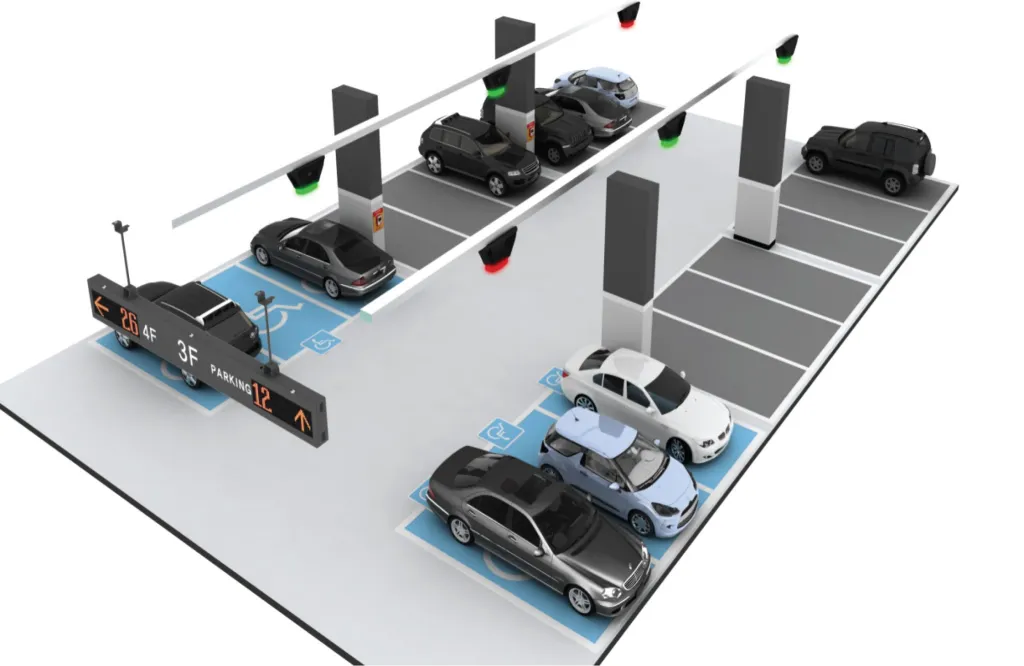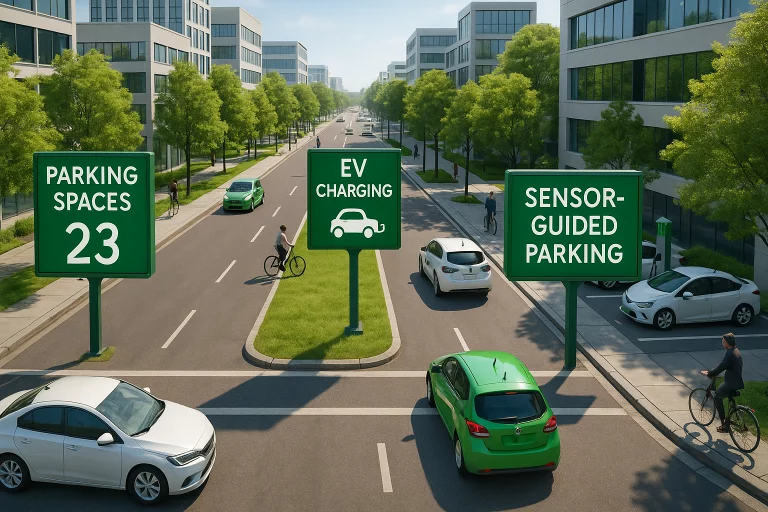News
How Smart Parking Technology Can Make Cities Greener

Introduction
Urban environments across the globe are grappling with the twin challenges of swelling populations and increasing transportation demands, which inevitably contribute to heightened pollution, traffic bottlenecks, and urban sprawl. As cities grow and evolve, finding innovative ways to address these issues has become a top priority for policymakers and urban planners alike. One promising area for large-scale impact lies in the modernization of parking management. Thanks to technological advancements, solutions such as an integrated parking access and revenue control system now offer more than just automated entry—they represent a pivotal shift toward more innovative, cleaner, and far more efficient urban transportation systems. These upgrades ease the parking process for everyday drivers and help cities progress toward important environmental, economic, and quality-of-life goals.
Modern smart parking technologies are transforming city infrastructure through the integration of cloud-based applications, sensor-guided navigation, and frictionless payment systems. The true impact, however, extends well beyond simply finding a parking spot. Smart parking platforms are actively contributing to broad sustainability initiatives by streamlining vehicle movement, reducing emissions, and supporting greener city design. Below, we explore how these innovative solutions are helping municipalities reduce congestion, cut back on carbon emissions, and shape a more sustainable urban future.
Reducing Traffic Congestion
Urban congestion is a major contributor to citywide gridlock and environmental decline. The stop-and-go traffic caused by drivers aimlessly searching for parking results in personal frustration and has compounding adverse effects on the broader urban ecosystem. Research consistently demonstrates that up to 30% of city center traffic comprises drivers seeking a place to park their cars. Innovative parking technology tackles this problem head-on by offering drivers real-time insights into available spaces via mobile apps and digital signage. Rather than circling blocks or double-parking, motorists are guided quickly and efficiently to open spots, making parking a straightforward task rather than a time-consuming ordeal.
As these systems become more sophisticated, cities can dynamically update and synchronize parking information with other traffic management tools. This level of integration results in fewer traffic jams, improved road safety, and decreased wear and tear on transportation infrastructure. During peak hours, festivals, or sporting events, competent guidance can prevent the chaos that often paralyzes busy neighborhoods, improving the quality of life for residents and visitors. Optimizing parking utilization, reallocating underused spaces, and cutting down unnecessary driving dramatically reduce congestion, freeing up valuable road space for other sustainable transport options such as buses and bikes.

Lowering Carbon Emissions
A significant reduction in vehicle idling and aimless driving translates into lower carbon emissions, which is critical for cities pursuing aggressive climate action goals. Smart parking minimizes the time spent searching for parking, leading to a measurable decrease in fuel consumption and air pollution. For instance, San Francisco’s forward-thinking SFpark program introduced dynamic pricing and sensor-guided navigation, which produced a 30% decrease in the average time spent finding a spot. This, in turn, led to lower emissions of greenhouse gases and fine particulate matter, improving air quality citywide.
The environmental gains extend beyond individual drivers. By leveraging vast streams of real-time parking data, city officials can better coordinate urban transportation networks, identify emission hotspots, and implement targeted interventions. Enhanced visibility and data-driven reporting also enable a faster response to air quality issues, supporting municipal efforts to track—and further reduce—the city’s overall carbon footprint over time. The combined effect is a healthier environment that benefits the present population and future generations.
Enhancing Energy Efficiency
Energy efficiency is a foundational principle of modern smart parking infrastructure. Many new systems incorporate advanced features such as LED lighting, low-power electronic displays, and even solar panels on payment kiosks and ticketing machines to decrease electricity usage drastically. This minimizes the environmental footprint of parking facilities themselves and drives down operational costs for cities managing these resources. Critically, embedded sensors and automation ensure that components like lighting or ventilation are activated only when vehicles and people are present, eradicating needless energy consumption during off-peak hours.
With the addition of automated scheduling and adaptive control systems, municipalities can adjust usage based on weather, daylight, peak periods, and even special events, ensuring resources are spent efficiently. Maximizing energy efficiency across public parking spaces accelerates the transition to low-carbon, cost-effective urban infrastructure—an essential step for forward-thinking city governments seeking long-term sustainability.
Promoting Sustainable Urban Planning
The data generated from innovative parking solutions has become a goldmine for city planners determined to make fact-based, sustainable decisions. Municipalities can tailor their development strategies by studying traffic and parking trends to fit actual usage patterns and community needs. For example, areas with chronically underused parking lots might be targeted for conversion into green spaces, affordable housing, or public plazas, bringing more vibrancy and accessibility to the city’s heart. This strategic reallocation can foster higher-density, mixed-use neighborhoods that are more efficient and livable.
Moreover, parking analytics empower cities to implement pricing models encouraging public transportation and ride-sharing, decreasing reliance on single-occupancy vehicles. City leaders can ensure maximum resident benefit by tailoring enforcement policies and resource investments based on real-world data. The marriage of innovative parking technology and sustainable urban planning is powerful in shaping greener, more socially inclusive communities that put people—not cars—first.
Supporting Electric Vehicle Adoption
The fast rise in electric vehicle (EV) popularity hinges on the availability of convenient, accessible charging infrastructure. Smart parking leads the way by integrating EV charging into everyday parking experiences, eliminating one of the main barriers to wider EV adoption. Drivers can use digital apps to locate charging-enabled spaces, reserve them in advance, and pay seamlessly—all while attending work, shopping, or dining out.
This innovative infrastructure boosts confidence in choosing cleaner transportation by making the process easier, faster, and more predictable. By supporting electric vehicle infrastructure through accessible charging options at key urban locations, cities encourage residents to make environmentally friendly travel decisions. The result is an ecosystem that promotes green transportation choices today while laying the foundation for tomorrow’s mobility landscape, with greater integration of shared vehicles and emerging technologies.
Case Studies of Successful Implementations
San Francisco (SFpark)
The iconic SFpark program is a shining example of technology-driven parking efficiency. By leveraging an ecosystem of sensors, dynamic pricing, and real-time data sharing, the city slashed average parking search time and sharply cut emissions—a win-win for drivers and the environment. SFpark’s success underscores how carefully designed parking reforms can enhance urban mobility and support community health goals.
Los Angeles
Los Angeles invested in solar-powered parking meters with digital payment capabilities to tackle some of the nation’s worst congestion. These new systems provide drivers more convenience and flexibility while feeding valuable usage data back to city administrators. The overhaul resulted in easier turnover of parking spaces, lower maintenance costs, and tangible improvements in citywide traffic flow, underscoring the multifaceted impact of smart parking upgrades.
Amsterdam
Amsterdam is internationally recognized for its integrated approach to sustainability. The city has paired adaptive, energy-saving street lighting with real-time parking guidance to facilitate smoother traffic and cut power usage. By embedding smart parking into a broader smart city strategy, Amsterdam has made significant strides toward climate resilience and set a global benchmark for how cities can combine technology and sustainable policy.
Challenges and Considerations
Despite its many advantages, rolling out smart parking infrastructure has obstacles. High upfront purchasing, installing, and maintaining equipment costs can be challenging, especially for resource-constrained cities. Government bodies must conduct thorough cost-benefit analyses and explore public-private partnerships to ensure long-term sustainability. Alongside financial hurdles, there’s an urgent need to address privacy and data security, given the sensitive nature of information collected and processed by smart parking systems. Robust safeguards and transparent governance are vital for public trust.
Additionally, not all communities will transition at the same pace. Effective public communication, equitable pricing, and digital accessibility are essential to ensure that no one is left behind—including those without smartphones or access to credit cards. Cities must design these systems to empower all users, bridging digital divides and preventing social inequity. Smart parking should uplift the urban experience for everyone, regardless of age, income, or technological know-how.
The Future of Smart Parking
The horizon for smart parking is promising. As artificial intelligence, IoT devices, and significant data analytics advance, cities will gain new tools for more intelligent, more adaptive parking management. Predictive forecasting, demand-based pricing, and deep integration with multi-modal transportation networks will allow urban centers to fine-tune mobility strategies more dynamically than ever. Future systems could guide drivers in real-time to available parking, provide instant incentives for sustainable travel, and
